7 Engaging Science Experiments for Curious Preschoolers
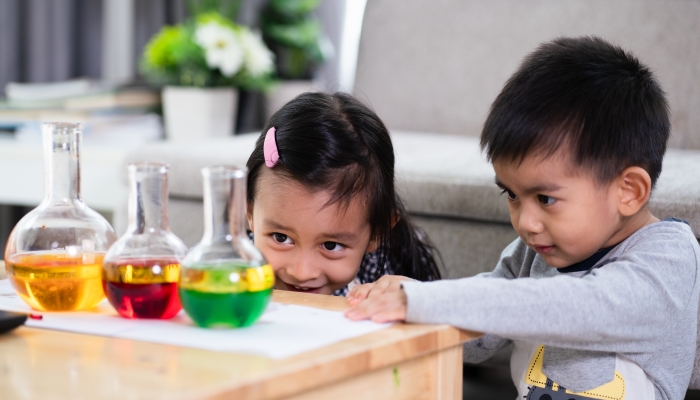
- Preschool science experiments help young kids learn patience, perseverance, and critical thinking skills.
- Science experiments teach kids different scientific concepts while promoting scientific literacy.
- Children are naturally curious, so introducing them to science experiments at a young age is a fantastic idea.
My kids love science experiments, and they helped get us through those long at-home days during the pandemic. Science activities for preschoolers are a great way to teach kids about the world around them and allow them to think outside the box.
Engaging in fun preschool science experiments is a great way to introduce kids to science concepts like chemical reactions and scientific principles.
Plus, science experiments encourage kids to look at the world differently and are a creative way to spark curiosity.
Science experiments for preschoolers don’t have to be complicated, and you’ll usually have all the supplies already. But don’t let your kids have all the fun; I promise you’ll enjoy these preschool science activities, too!
Experiment 1: Rainbow Walking Water
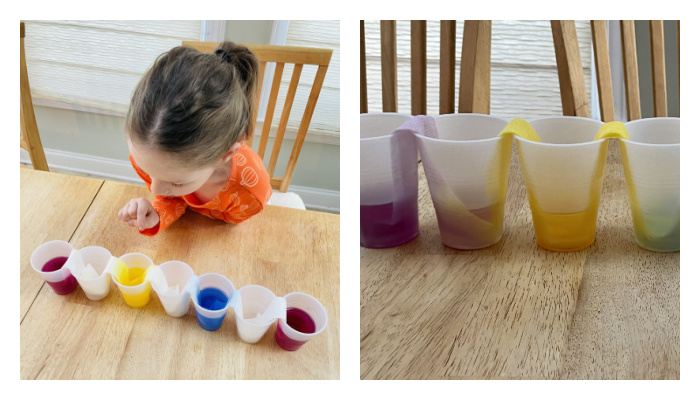
I took advantage of one of my favorite science activities when my kids had the day off from school. Rainbow Walking Water is a fun experiment that helps teach preschoolers about primary and secondary colors.
This experiment is also a great way to introduce the idea of capillary action, which is how water can move up against the force of gravity through a tube or something porous (like the paper towel). This is the same way that water moves up through a plants roots.
Materials Needed:
- Food coloring (red, blue, and yellow)
- Clear plastic cups
- Paper towels
- Water
Steps for Rainbow Walking Water:
- Line seven cups in a row, filling every other cup with about ¾ cup of water. (The plastic cups I had were taller, so I added extra water.)
- Next, add five drops of red food coloring to the first and last cup. Stir the water and food coloring to mix it up.
- Then, add five drops of yellow food coloring to the third cup.
- Lastly, add five drops of blue food coloring to the fifth cup.
- Fold a half sheet of a paper towel in half lengthwise and then again.
- Finally, place half of a paper towel in one cup, allowing the other half to lie in the next cup. You’ll continue draping the paper towels over each cup until the seventh cup.
This experiment requires some patience on the child’s side because it takes time for the color to creep up the paper towel and into the empty cup. My daughter went off and played and would return to check on it.
However, your kids will enjoy watching the colorful surprise as each color goes from one cup to the next via the paper towels. You can also let your kids write down what they observed in the science experiment, including what happens when the primary colors mix.
Tips
- It’s best to use select-a-size paper towels or cut regular-sized ones in half.
- While waiting for the experiment to complete, your child can practice mixing colors with the food coloring and water in separate cups.
Experiment 2: Volcano Eruption
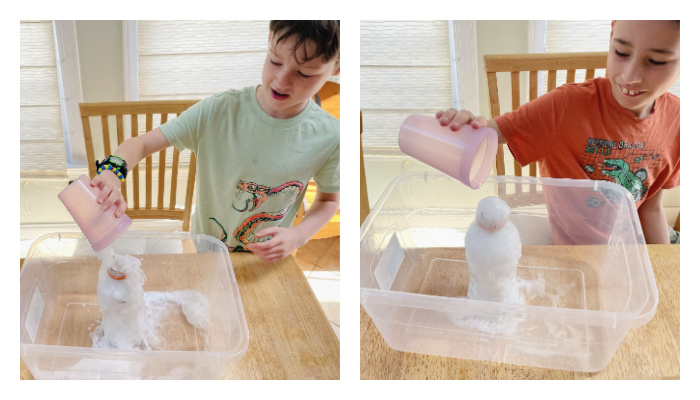
This classic science activity uses baking soda and vinegar to create a mini volcano. Since baking soda and vinegar aren’t harsh chemicals, you don’t have to worry about your little ones’ hands getting wet.
The volcano eruption is an excellent preschool science experiment introducing the concept of chemical reactions. You can explain to your kids that a chemical reaction occurs when baking soda and vinegar create the gas carbon dioxide.
What I loved about this experiment was that my 7-year-old son wanted to design his own volcano when we were finished. It’s amazing how science can spark such creativity.
We also did this experiment more than once since each of my kids wanted a turn.
Materials Needed:
- Baking Soda
- Vinegar
- Jar or bottle
You can also add food coloring and dish soap for a more “explosive” reaction.
Steps for Volcano Eruption:
- Put ½ cup baking soda in the bottle
- Pour a cup of vinegar in (The more vinegar, the bigger the eruption)
- Enjoy the eruption!
Tips
- Perform the experiment on a plate, a plastic bin, or a sink for easy cleanup.
Experiment 3: Magnetic Exploration
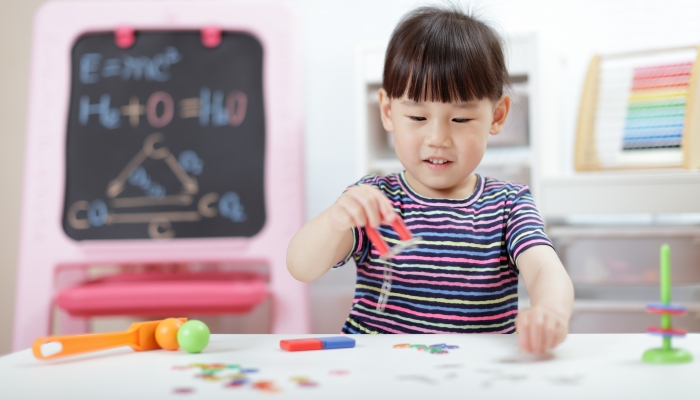
Using different objects, kids can learn about which items are magnetic and record their observations. Kids can learn about the basic understanding of magnetism and the development of categorization skills.
Magnetic Exploration is a great science activity for kids at home because you can have them search around to find magnetic objects to test.
In addition to magnetic items, find non-magnetic things like crayons or pencils so your child can see the difference when testing.
Materials Needed:
- Various magnets (bar, ring, horseshoe, etc.)
- Non-magnetic items (crayons, pencils, markers)
Tips
- Keep an eye on little ones to ensure they don’t put anything in their mouth.
Experiment 4: Sink or Float
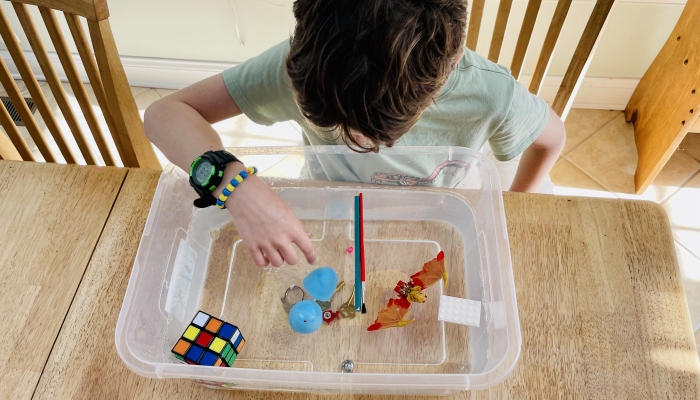
Sink or float is a fun science experiment introducing young children to buoyancy and density. While preschoolers might not know the big words, they’ll soon learn what makes something float or sink.
Sink or Float is an easy science experiment, using only a sink or large tub and items around the house. You can have your kids guess what they think will sink or float, which helps introduce hypothesis testing and validation.
While water experiments can get messy, they are also more fun for young kids. My boys thoroughly enjoyed running around the house to find objects to test.
Materials Needed:
- A large basin of water (sink or tub)
- Various items to test (cork, plastic toys, metal objects, popsicle sticks, etc.)
Tips
- Don’t fill your sink or tub to the top. This will help prevent making a mess.
Experiment 5: Make a Solar Oven
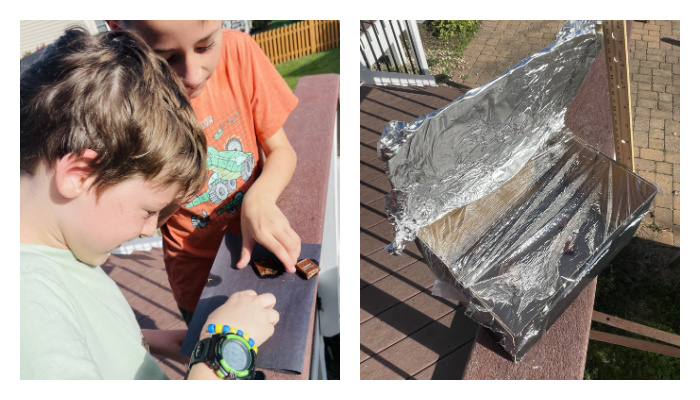
You can wow kids with this easy experiment! Learning how to make a solar oven is easier than you think, and it’s also one of my son’s favorite science experiments.
There are several ways to create a solar oven, but the steps here are for a more straightforward one with preschoolers in mind.
Solar ovens work best on a hot day, so this is one of the best easy preschool science experiments for a summer day. Our chocolate melted fast, so don’t leave it outside too long! My boys thoroughly enjoyed eating the end product.
Materials Needed:
- Pizza box or shoe box
- Aluminum foil
- Chocolate pieces
- Black construction paper
- Glue stick or tape
- Plastic wrap
- Skewer or ruler
Steps to Make a Solar Oven:
- I used a shoe box and cut the sides of the top off to make it easier to assemble.
- Next, attach aluminum foil to the inside of the flap on top with tape or glue.
- I laid the black construction paper on the bottom of the box and added the chocolate pieces. (Of course, my kids asked if they could eat them once they melted.)
- Tape or glue the plastic wrap in the opening above your black construction paper.
- Prop the aluminum foil piece up with your skewer or ruler.
- Set outside directly in the sun (preferably on a hot day) and watch your chocolate melt!
Tips
- This solar oven works best on a hot day; otherwise, you’ll likely be waiting a while for things to melt.
- While your kids wait for the chocolate to melt, discuss how the sun is a heat source and why it won’t work as well on a cloudy day.
Experiment 6: Easy Bubble Solution
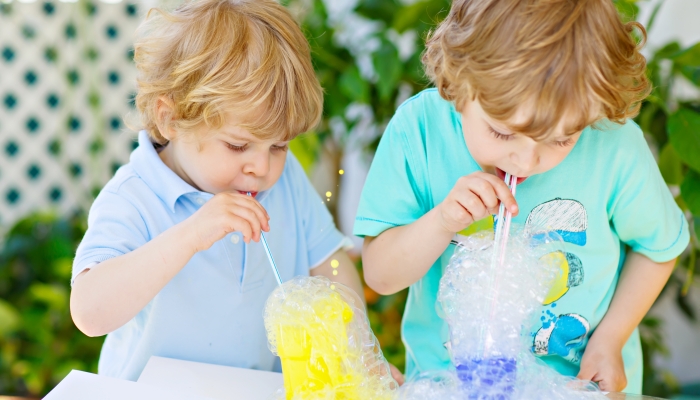
While you can buy bubbles at the store, creating bubble solutions is a simple, fun science project for preschoolers. Also, your little ones will think it’s super cool to make bubbles at home. Remember, science activities for preschoolers don’t have to be challenging to be fun.
This simple science experiment will show preschoolers what happens when corn syrup and soap mix with the water. Have your little ones predict what will happen before you add each.
Materials:
- 6 cups room temperature water
- ½ cup light corn syrup
- 1 cup liquid dish soap
- Empty container with a lid
- Measuring cups
- Pipe cleaners to create bubble wands
Steps to Make Bubbles:
- Mix the corn syrup and water in your container and let your child stir thoroughly.
- Add the dish soap and stir gently, not allowing suds to form.
- Let the mixture sit uncovered for several hours or overnight before using.
- Twist the pipe cleaners into bubble wand shapes.
- Pour the completed solution into small cups and let your kids dip their wands to begin blowing bubbles.
Tips
- Mix the bubbles outside to prevent spilling inside.
- Don’t use hot water.
Experiment 7: Make Sound Waves
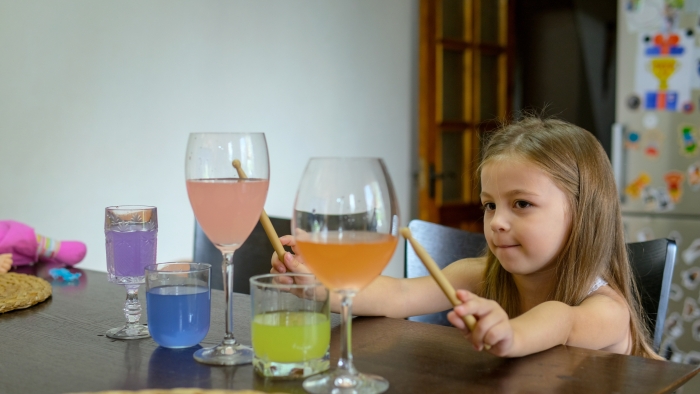
If you’re looking for a fun activity for your kids that doesn’t require lots of materials, you’ll appreciate the sound waves experiment.
What I love about this experiment is it takes a tricky scientific concept (sound waves) and turns it into a basic idea to teach children how they work.
Materials:
- 4 or 5 glasses
- Water
- Fork
Steps:
- Fill your glasses with different amounts of water.
- Have your child tap each glass to hear the low and high pitches.
Benefits of Science Experiments for Preschoolers
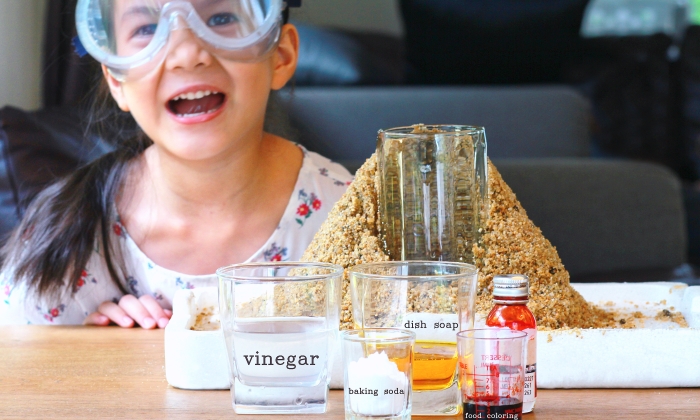
The best science projects for kids are a fun way to explore science at home or in the classroom. Even older kids will enjoy the creativity and hands-on learning experience science experiments bring.
The National Science Teaching Association11. Early Childhood Science Education. National Science Teaching Association. 2014. https://www.nsta.org/nstas-official-positions/early-childhood-science-education states that from an early age, children have the ability to observe, explore, and discover the world around them.
Promotes Cognitive Development
Fun science activities are a great way to encourage cognitive development, including working on problem-solving skills enhancement.
In addition, science projects introduce children to the scientific method in a more straightforward form. A 2006 study22. Koerber, S., Sodian, B., Thoermer, C., & Nett, U.. Scientific Reasoning in Young Children: Preschoolers’ Ability to Evaluate Covariation Evidence. Swiss Journal of Psychology. 2006;64(3), 141–152. https://doi.org/10.1024/1421-0185.64.3.141 by Koerber et al. published in the European Journal of Psychology found that preschool-aged children could demonstrate a basic understanding of the hypothesis-evidence relationship.
Encourages Social and Emotional Growth
When engaging in a preschool science activity with others, kids learn cooperation and teamwork while building patience and perseverance. Children learn quickly that only some experiments go correctly the first time.
Develops Physical Skills
Working on a fun science activity encourages kids to utilize fine motor skills through hands-on activities while working on coordination and control improvement. In addition, outdoor activities for preschoolers help develop gross motor skills necessary to increase their physical skills.
FAQs
How can engaging in preschool science experiments help in developing a growth mindset?
Preschool science activities allow children to take risks while understanding their reasoning may not always be accurate.
While preschoolers are still learning, engaging in science experiments at an early age helps set the foundation for testing, hypothesizing, and figuring things out.
How does a hands-on science experiment contribute to the language development of preschool children?
Even simple science experiments help preschoolers learn about asking why, what, when, and how and open-ended questions.
According to the National Association for the Education of Young Children33. Méndez, L. I., Lee, T. D., Hegde, A. V., McMillan, V. J., Dixon, J. B., Goodell, S. L., & Stage, V. C.. Let’s Talk: Linking Science and Language Learning in the Preschool Classroom. National Association for the Education of Young Children. 2023. https://www.naeyc.org/resources/pubs/yc/summer2023/linking-science-and-language, science talk is a flexible instructional approach that promotes conversations about science while allowing children multimodal engagement to learn science and language content and skills.
References
- Early Childhood Science Education. National Science Teaching Association. (2014, January). https://www.nsta.org/nstas-official-positions/early-childhood-science-education
- Koerber, S., Sodian, B., Thoermer, C., & Nett, U. (2006). Scientific Reasoning in Young Children: Preschoolers’ Ability to Evaluate Covariation Evidence. Swiss Journal of Psychology, 64(3), 141–152. https://doi.org/10.1024/1421-0185.64.3.141
- Méndez, L. I., Lee, T. D., Hegde, A. V., McMillan, V. J., Dixon, J. B., Goodell, S. L., & Stage, V. C. (2023). Let’s Talk: Linking Science and Language Learning in the Preschool Classroom. National Association for the Education of Young Children. https://www.naeyc.org/resources/pubs/yc/summer2023/linking-science-and-language
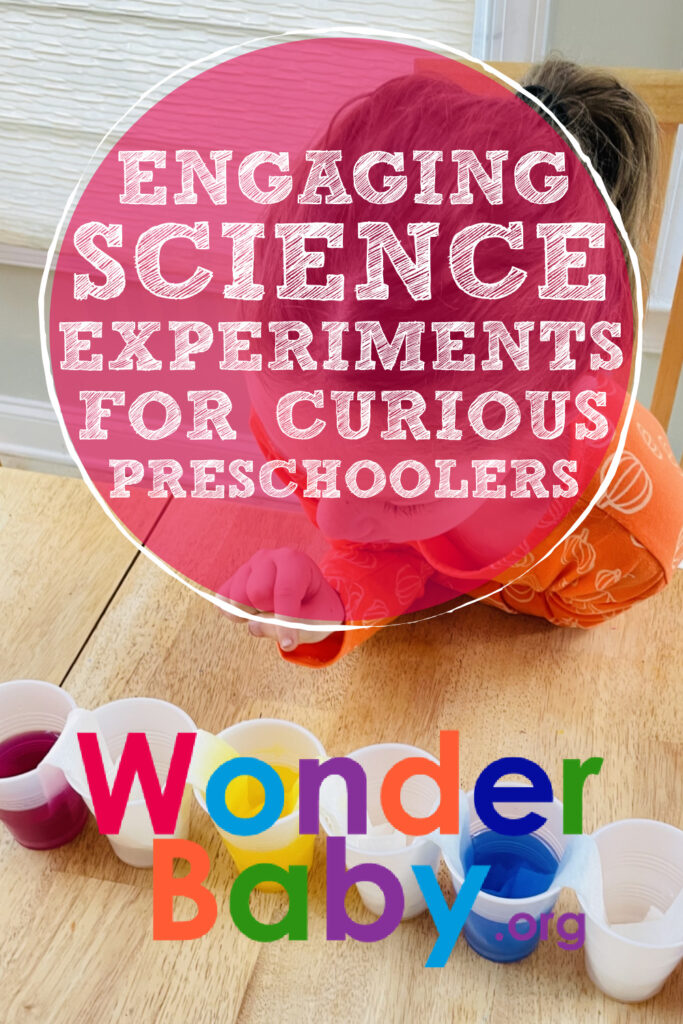
Related Posts
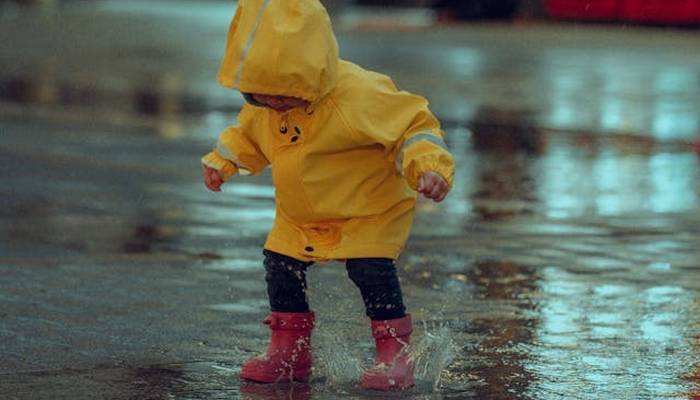
Math and Science
4 Weather Activities for Preschoolers
Whether the weather is sunny, cloudy, windy or rainy check out these educational weather activities for preschool that your children will love!
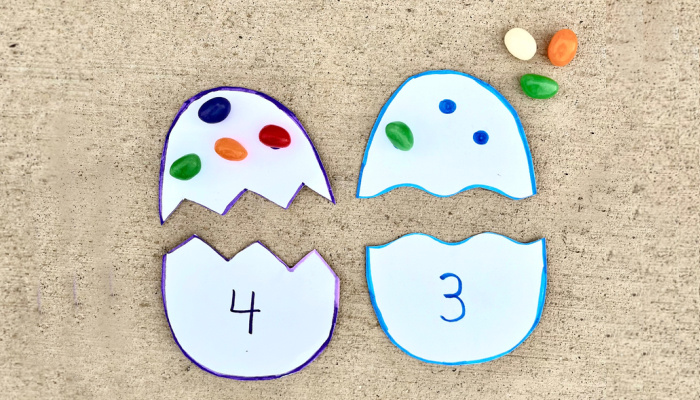
Holiday Crafts and Ideas, Math and Science
Easter Egg Number Matching Game
Counting has never been more fun than with this Easter Egg Number Matching Game. This game is easy to assemble and will surely be a hit with your little one!
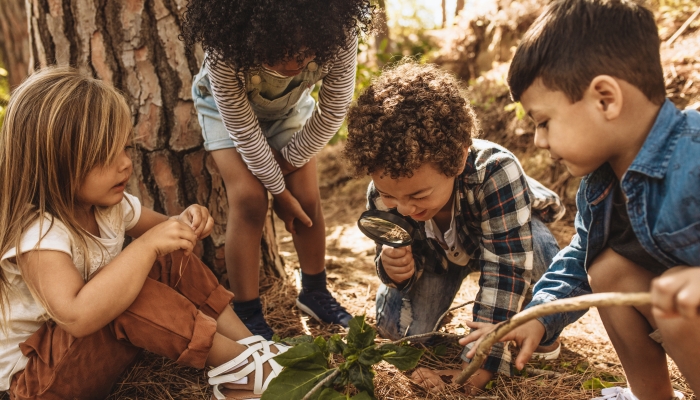
Math and Science, Sensory Activities
Exploring Nature: 5 Outdoor Learning Activities for Preschoolers
Looking for things to do outside with your preschooler? These ideas for outdoor learning are easy, inexpensive, informal, and best of all, fun!